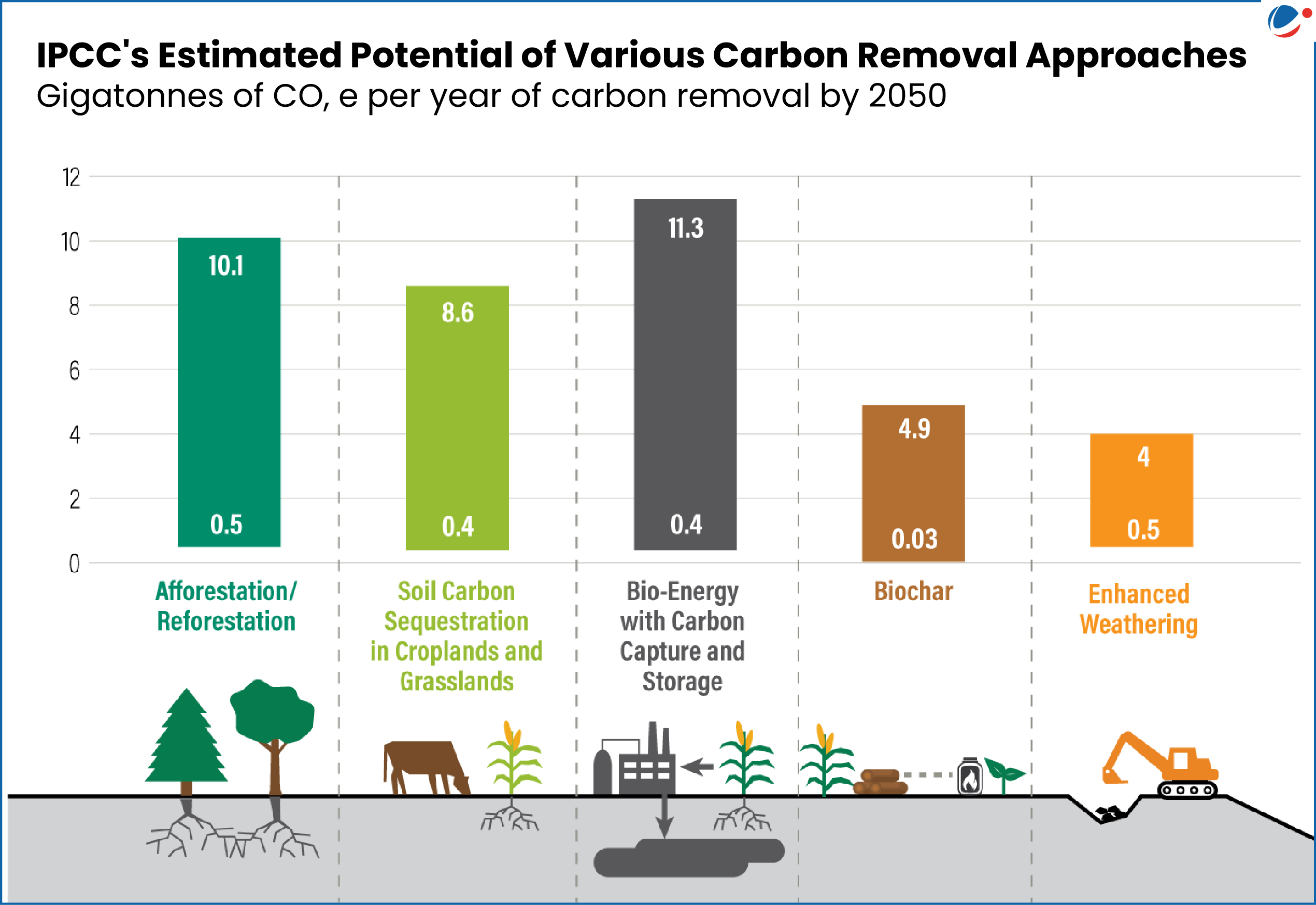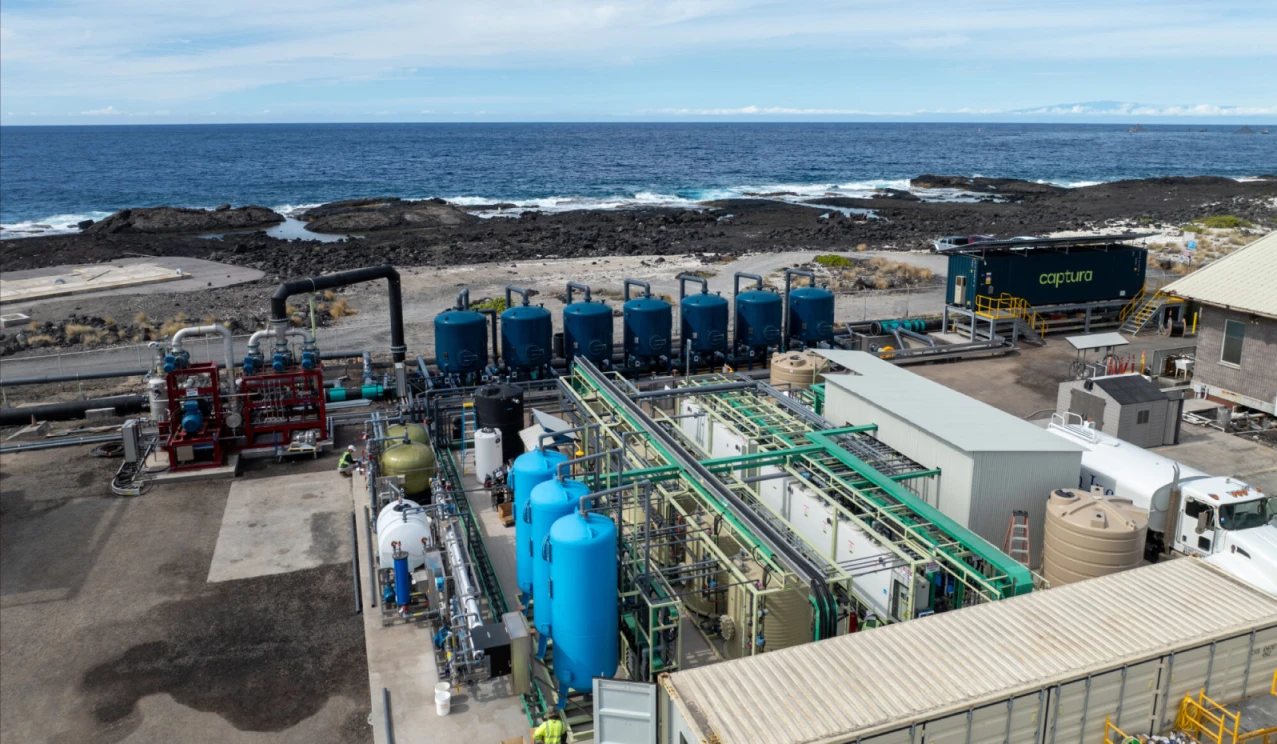Present government climate pledges propose using approximately 1.01 billion ha of land for Land Based Carbon Removal.
About Land Based Carbon Removal (LBCR)
LBCR refers to strategies that use terrestrial ecosystems primarily forests, soils, wetlands, and agricultural landscapes to absorb and store carbon dioxide from the atmosphere.
Methods of LBCR

- Reforestation and Afforestation: According to the IPCC, reforestation and afforestation can mitigate 0.5–10.1 gigatonnes of CO₂ per year.
- Soil Carbon Sequestration: It refers to the process of capturing atmospheric CO₂ and storing it in soils in the form of soil organic carbon (SOC).
- Bioenergy with Carbon Capture and Storage (BECCS): In BECCS, energy crops like silvergrass are grown, which are burned as fuel for bioenergy, and the resulting CO₂ emissions are captured and stored underground.
- Geologic Carbon Sequestration: Captured CO₂ either from direct air capture or biogenic sources is injected deep underground into porous rock formations for long-term storage.
- Biochar: Burning biomass in an oxygen-limited environment producing more stable form of carbon, which can then be applied to soils – adding nutrients and increasing soil’s carbon stocks.
- Enhanced Weathering: Accelerating the natural reaction between carbon dioxide and reactive sources, such as certain types of rocks, to increase carbon uptake.
Other Key Highlights of Land Gap Report
|





